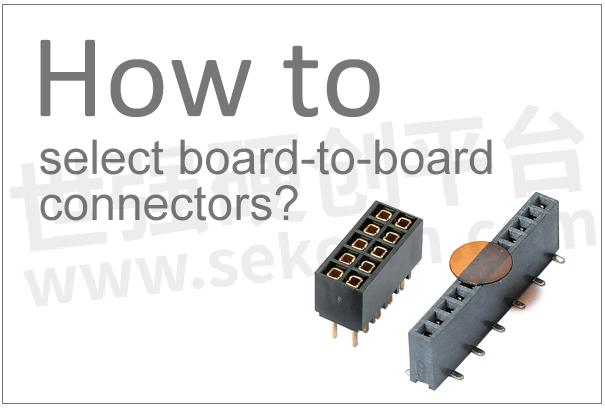How to Select Board-to-board Connectors?

Choosing the right board-to-board connector product is crucial for users. So, how do we choose board-to-board connectors and what are the selection criteria?

In recent years, board-to-board connectors have been trending towards smaller sizes. The most common board-to-board connector spacing for handheld consumer electronic devices is 0.40mm, while a 1.00mm stacking height is considered a small connector. Recently, major original equipment manufacturers have been using connectors with spacing as small as 0.70mm or even smaller. Several years ago, old-style miniature connectors with spacing wider than 4.00mm were replaced by connectors in the 3.40mm width range, and the current "narrow-body" board-to-board concept is usually within the connectors ranging from 2.40mm to 2.60mm. Is a smaller size really better when it comes to board-to-board products? In fact, when purchasing board-to-board connectors, in addition to basic issues such as circuit size, stacking height, and width, there are still several things that need to be considered.
Is a smaller size always better? If you're willing to accept a smaller vacuum pick-up area, then perhaps it is. Before selecting an ultra-small connector, you need to check whether the connector has all the other features you need and test it carefully to ensure that it is strong and durable enough. Then, it seems that you need to choose a socket with a top-mounted connector because this configuration can run traces below the socket and may be easier to use with conformal coatings. The drawback of top-mounted sockets is that the vacuum pick-up area is often narrower, and there is no plastic housing material above the socket terminals to prevent the upward movement caused by rough disconnection actions, making the more uneven top surface of the socket causing problems for operators during connection operations. These new connectors with greater disconnection force sound great, but you may need to tolerate extra connector length to achieve the locking function required by these connectors. Meanwhile, larger disconnection forces usually mean larger engagement forces, which may also cause problems for larger circuit sizes.
- +1 Like
- Add to Favorites
Recommend
- Function and Parameter Selection of Board-to-Board Connectors
- Inspection and Connection Troubleshooting of Board-to-Board Connectors
- Features and Classifications of Board-to-Board Connectors
- Basic Performance of Board-to-Board Connectors
- Production Process of Board-to-Board Connectors
- Classification and Characteristics of Board-to-Board Connectors
- Intro to Plastic Insulators of Board-to-board Connectors
- Application Requirements of Board-to-board Connectors in the Wireless Equipment Market
This document is provided by Sekorm Platform for VIP exclusive service. The copyright is owned by Sekorm. Without authorization, any medias, websites or individual are not allowed to reprint. When authorizing the reprint, the link of www.sekorm.com must be indicated.






























































































































































































































































































































































































































































































































































































































































































































































































































































































